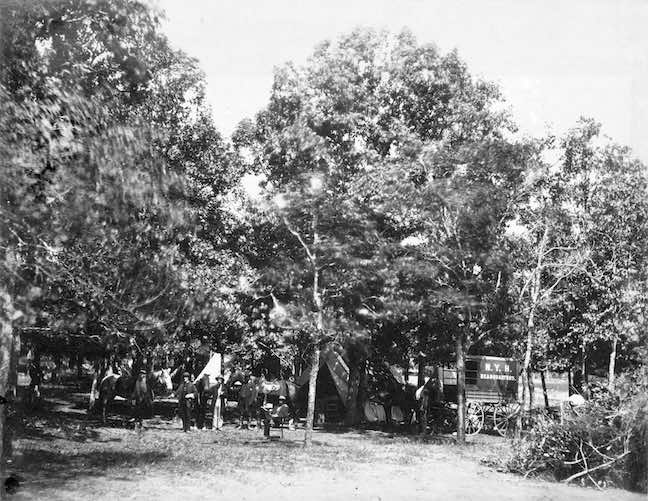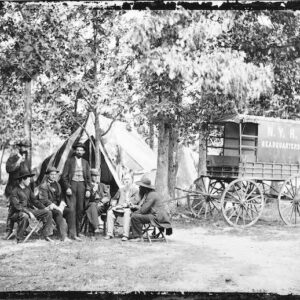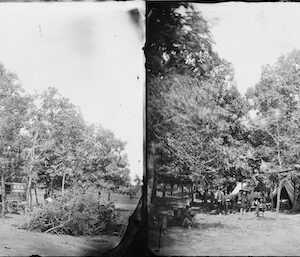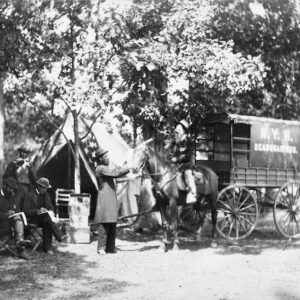| Credit: | by OSullivan (Timothy H.) |
|---|---|
| Date: | 1863.08 |
| Negative Size: | 8 in. x 10 in. |
| Equipment: | folding chair; horse; wall tent |
| Locations & Lines: | Bealeton VA; Virginia |
| Transports: | New York Herald Headquarters wagon |
| Sources: | Library of Congress; National Archives; USAMHI – MOLLUS collection |
$4.99
File Details: AHBIm, 400 DPI, TIFF, Original Photograph, 9.5 Mb
Image ID: AHBI
Gardners Photographic Sketch Book Of The War. Vol. 2, No. 56. Headquarters, New York Herald, Army of the Potomac, Bealton. Headquarters New York Herald in the Field. Military operations were never so faithfully chronicled as during the late war. Each army was accompanied by a corps of newspaper correspondents, most of whom were dependent upon the officers hospitality. At times the movements of the Army rendered it almost impossible for correspondents to live comfortably, and the difficulties to be contended with led many of those who first set out to write the history of campaigns to abandon the undertaking. The New York Herald was the first and only journal to organize a corps of army correspondents who might live independent of the officers, and conduct the system successfully to the close of the war. In the Army of the Potomac it had one correspondent attached to the headquarters of each corps of infantry, and one with each division of cavalry, all under a chief at the Commanding Generals headquarters. The chief had a number of messengers for the purpose of communicating with the several correspondents, and with the office in New York, each of whom was capable of performing the duties of a correspondent, and thus fill any vacancy that might occur during active operations. Horses and wagons for the transportation of tents, camp equipage, forage, &c., were furnished by the Herald, and the representative of that paper always had at headquarters a place to which he might invite his friends. Thus organized, the Herald correspondents were generally enabled to outstrip all competitors in furnishing the public with intelligence, and found army life as pleasant as reportorial duties in a city. All were exposed to danger, and a number lost their lives in the field. Several were wounded, some were captured, and experienced all the horrors of rebel prisons, and not a few still suffer from the effects of fevers contracted in the swamps of the Chickahominy. Others, in the course of their army experience, acquired a knowledge of military matters that led to their appointment as officers, and notwithstanding the reduction of the army are now retained by the Government in responsible positions. The Herald was not alone represented in the field, but the completeness of its arrangements rendered competition fruitless. The Times, Tribune, World, and Western papers sent out enterprising men, some of whom have since written valuable histories of military movement. To the army correspondents the country owes more than it can fully appreciate, until the historians in the future shall attempt to give the true narration of these revolutionary events.
Some prints were produced from reduction copy negatives that reduced them to album card (or faux stereo card) size.




